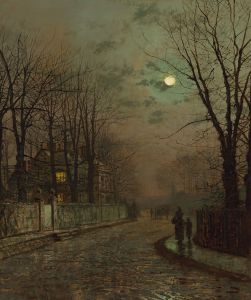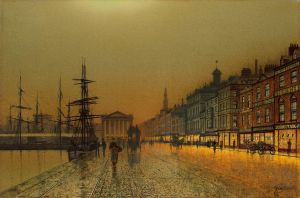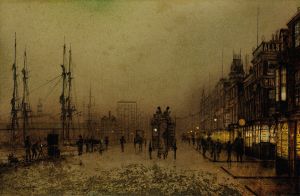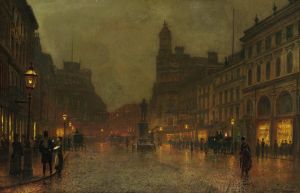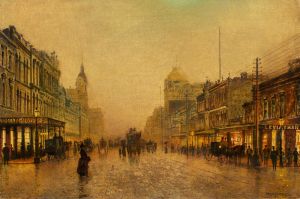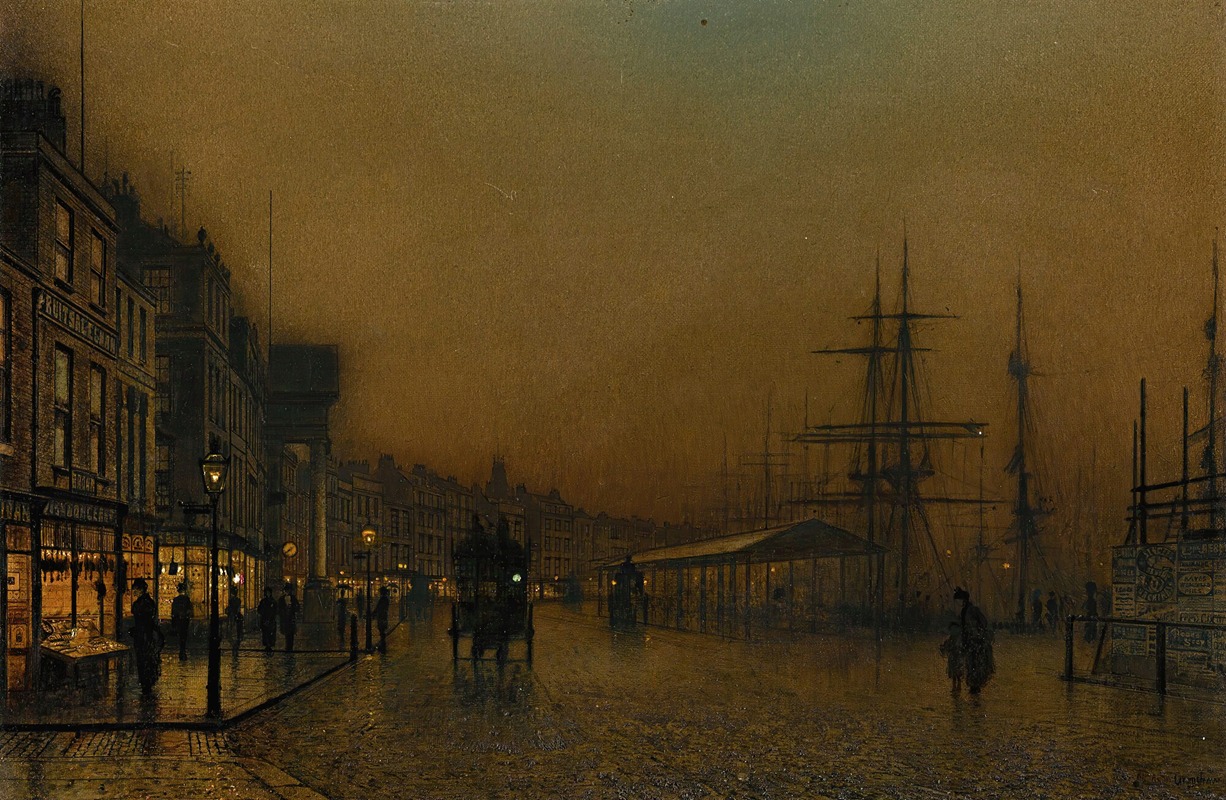
Glasgow
A hand-painted replica of John Atkinson Grimshaw’s masterpiece Glasgow, meticulously crafted by professional artists to capture the true essence of the original. Each piece is created with museum-quality canvas and rare mineral pigments, carefully painted by experienced artists with delicate brushstrokes and rich, layered colors to perfectly recreate the texture of the original artwork. Unlike machine-printed reproductions, this hand-painted version brings the painting to life, infused with the artist’s emotions and skill in every stroke. Whether for personal collection or home decoration, it instantly elevates the artistic atmosphere of any space.
John Atkinson Grimshaw (1836–1893) was a prominent British painter known for his atmospheric and detailed depictions of urban and suburban scenes, particularly under moonlight. One of his works, Glasgow, exemplifies his mastery in capturing the mood and essence of Victorian-era cityscapes. Grimshaw's paintings often focused on the interplay of light and shadow, and Glasgow is no exception, showcasing his ability to evoke a sense of quiet beauty and nostalgia.
The painting Glasgow portrays a street scene in the city of Glasgow, Scotland, during the late 19th century. Grimshaw's attention to detail is evident in the cobblestone streets, gas lamps, and the wet, reflective surfaces that suggest recent rain. These elements create a moody and atmospheric setting, characteristic of his work. The composition typically includes figures walking along the street, often depicted as silhouettes, which adds a sense of scale and human presence without detracting from the overall ambiance of the scene.
Grimshaw's work is often associated with the Aesthetic Movement, which emphasized beauty and visual harmony. His ability to capture the industrial and urban landscapes of Victorian Britain while imbuing them with a poetic quality made him a unique figure in 19th-century art. Glasgow reflects the city's importance as a major industrial and commercial hub during this period, though Grimshaw's focus remains on the aesthetic and emotional resonance of the scene rather than its industrial aspects.
The painting is part of Grimshaw's broader body of work that includes depictions of other cities such as Leeds, Liverpool, and London. His urban scenes often highlight the transformative effects of industrialization on the landscape, while also romanticizing the quiet moments within bustling cities. Grimshaw's technique involved the use of thin glazes and meticulous attention to detail, which allowed him to achieve a luminous and almost photographic quality in his paintings.
While specific details about the creation or current location of Glasgow are not widely documented, the painting remains an example of Grimshaw's skill in capturing the essence of Victorian urban life. His work continues to be celebrated for its technical precision and its ability to convey mood and atmosphere, securing his place as one of the most distinctive painters of his era.









